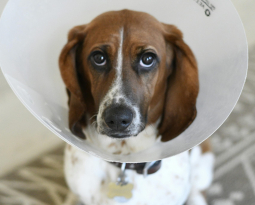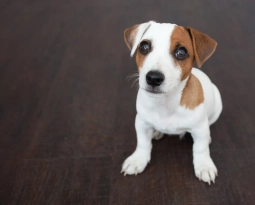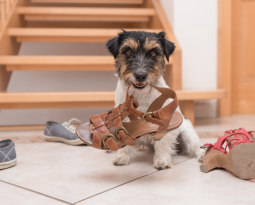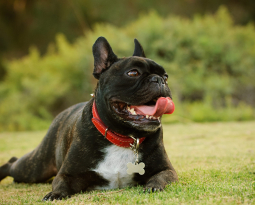Bringing a new pup home is incredibly exciting for everyone involved! Now, whether that excitement is good excitement might depend on how the introductions go. The new furry member can cause stress and the new surroundings and pets might give the pup a scare. This time on the Acoma Animal Clinic Blog we’re going to give you some tips about introducing a new puppy to your established home!
Puppy, Meet Your New Home!
The very very first thing you should do when bringing your new puppy home is to show them their potty area. Whether it’s outdoors or a specific puppy pad area as you’re getting ready to house train them, show the puppy around the potty area first thing. Chances are they’ll need to go after the trip, and letting them sniff and stretch their legs can help them get acclimated to this important spot.
After he has had the time to use the bathroom and get a full sniff in, it’s time for some quiet time. Take them to their crate or enclosure for quiet time. This will give the puppy a chance to relax, look around the immediate surroundings, but without getting overwhelmed by pets, people, and other distractions. Usually, you’ll want to keep your puppy’s crate next to your bed for the first couple of weeks. This lets him become very familiar with you, your smell, and help the puppy relax.
If your puppy can’t fit in your room and has to sleep elsewhere in the house you might need to do a few extra things to help him get a good night’s sleep.
Try:
- Leaving a shirt or towel in the crate with him with your smell on it
- Have a night light in the room
- A ticking clock
- Soft music
Remember: Most puppies will need to go potty at least once during the middle of the night and right away in the morning. When they’re young they can’t hold their bladder for as long as they’ll be able to when they’re adults.
Making Your Home Puppy Safe
In this section we’ll just paraphrase another blog we’ve written on this subject!
When you are puppy-proofing your home, consider both the inside and outside of your property. Puppies love to explore and get into trouble, chewing and eating on all sorts of things. Some are more aggressive chewers than others, so keep items off the ground and keep an eye out for the way they behave with their toys.
While your puppy will be spending the majority of their time inside, preparing your yard is just as important. Make sure that you have a designated area for your puppy to use the bathroom. This might include a strip of grass (synthetic or real), or an area of rock.
In most cases, your pup eating an occasional blade of grass or a leaf will not harm them. However, if you find that your puppy is constantly eating dirt, sticks, and more concerningly rocks, they may have puppy pica. Don’t be alarmed, usually puppies grow out of this in a year or so. However, if you do notice this behavior, you should always consult your vet as they could potentially experience a GI blockage.
When you are in the early stages of potty training, try keeping your pup in one general area, and eliminate any roaming. This will help them learn where they can go in the yard, eliminate accidents in the house, and set them up for future success. It may also be helpful to train your dog to go on command. One way to do this is by saying the same word or phrase every time you take them to the bathroom
Introducing Your Puppy to Other Pets
Alright, not the biggest part of introducing a pup to a new household, and perhaps the most stressful – introducing your puppy to other pets. It’s a good idea to introduce your puppy to other pets as young as possible as they’ll acclimate better. Keep your pup on a leash during introductions to kepe them safe, if the pup attempts any trouble give them a stern no.
Introducing A Puppy to A Dog
The ideal scenario for introducing your puppy to a new dog is outside and on a leash. This allows the two animals to sniff and smell one another without having strong territorial or protective behaviors because they’ll both be on even footing in this space.
Introducing A Puppy to A Cat
Introducing your puppy to cats can be a bit easier! Here rely on the power of a door – put one animal in a confined space, such as a room with the door closed, and have the other on the other side of the door. This will allow them to smell each other without stressing each other our or jumping at them. Let them get used to each other’s smells first so then when it’s time to meet snout to snout they’ll be more calm and familiar – after all they know this scent!
In both cases – take your time! There’s no rush to introduce pets completely. Slow and steady wins the race and gets the job done right and safely.
Congratulations on the new puppy! Make sure you get up to date on shots!







